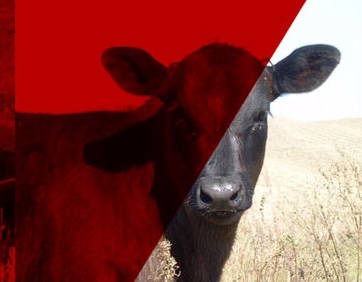The late Dr. Danny Klinefelter was an Agricultural Economist from Texas A&M who developed and coordinated the well-known course, The Executive Program for Agricultural Producers, which he initiated in 1991. Over 2,000 producers have completed the program since it started.
Dr. Klinefelter wrote numerous articles about his experiences working with agricultural producers and the consistent characteristics he observed in those who were successful business managers. In 2017, he wrote an article titled "Farwell, It Has Been an Interesting Ride” in which he highlighted sixteen things he identified that he saw top farmers and ranchers consistently did in their businesses.
One of those things he identified is “The 5% rule.” According to Dr. Klinefelter, “A 5% increase in price received, a 5% decrease in costs, and a 5% increase in yield (production) will often produce more than a 100% increase in net returns. The effect is cumulative, multiplicative, and compounding.”
How might the 5% principles apply to an “average” cow-calf herd? Consider the following example:
Let’s assume an “average” 100-head cow herd with an annual economic cost of $1,500 per cow and an 85% calf crop weaned per cow exposed. Calves average 550 lbs. when sold at weaning for $3.50 per pound.
| Gross income from calf sales 85 X 550 lbs. X $3.50 per pound = | $163,625 |
| Annual cow cost of $1500 per cow X 100 cows in the herd | $150,000 |
| NET INCOME | $ 13,625 |
This is a profit per cow of $136.25.
Now, let’s assume a 5% improvement in the percentage of calves weaned per cow exposed (89%), a 5% reduction in annual cow costs ($1,425), and a 5% increase in the price received for calves ($3.68 per pound) when sold at weaning. The weaning weight of 550 lbs. stays the same.
| Gross Income from calf sales at 89 X 550 lbs. X $3.68 per pound = | $180,136 |
| Annual cow cost of $1425 per cow X 100 cows in the herd = | $142,500 |
| NET INCOME = | $ 37,636 |
This is a profit per cow of $376.36 or $240.11 more per head than the “average” production cow herd.
In this scenario, when management of the cow herd improved the number of calves weaned per cow exposed to breeding by 5%, decreased annual cow costs by 5%, and captured a 5% increase in sales price, it resulted in a 276% increase in net income from the cow herd.
“Studies show that the most sustained success comes from doing 20 things 5 percent better, rather than doing one thing 100 percent better,” Klinefelter says. “Also, the most profitable producers tend to be only about 5 percent better than average farmers in terms of costs, production, or marketing.”
Nickels and dimes add up to dollars! The continuous pursuit of improvement through several small changes can make a significant difference in cow-calf profitability. In this year of historically high cattle prices, consider strategic investments that will improve the long-term economic competitiveness of the cow-calf enterprise. Are there “points of leverage” where tactically utilizing an input could have a substantial improvement in production? Assess also returns on inputs. Are there any processes that could be reduced or eliminated without significantly impacting production?
The framework of “the 5% rule” provides a tangible goal and thought process to evaluate ways to improve production and marketing while also reducing costs. It is also a reminder that minor improvements across several areas can significantly improve overall profitability.
Article by Aaron Berger, Nebraska Extension Livestock Educator.

